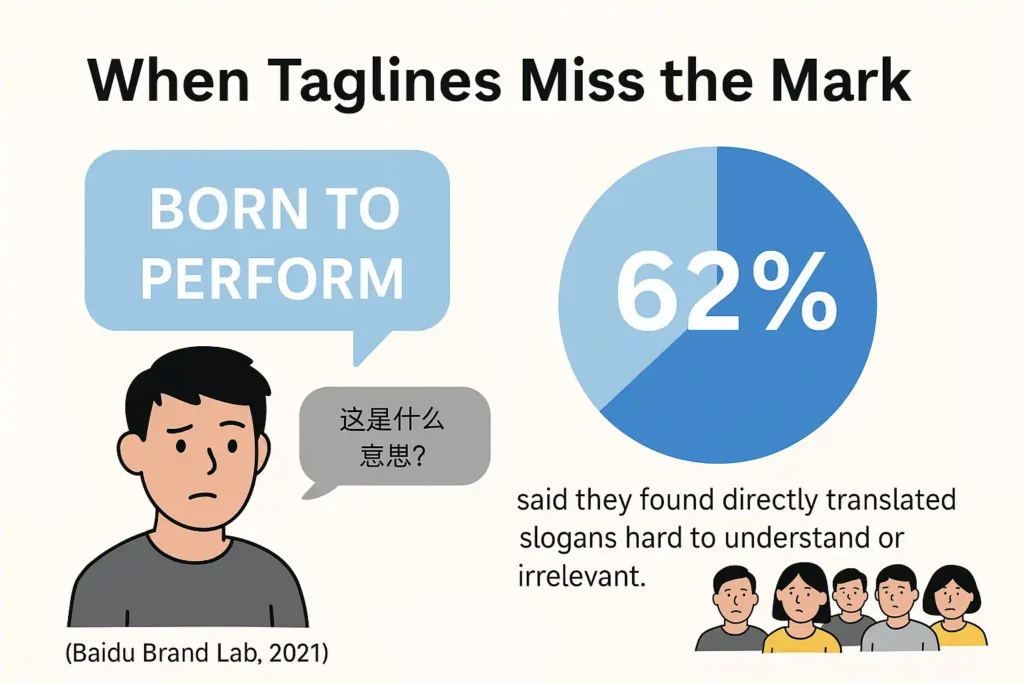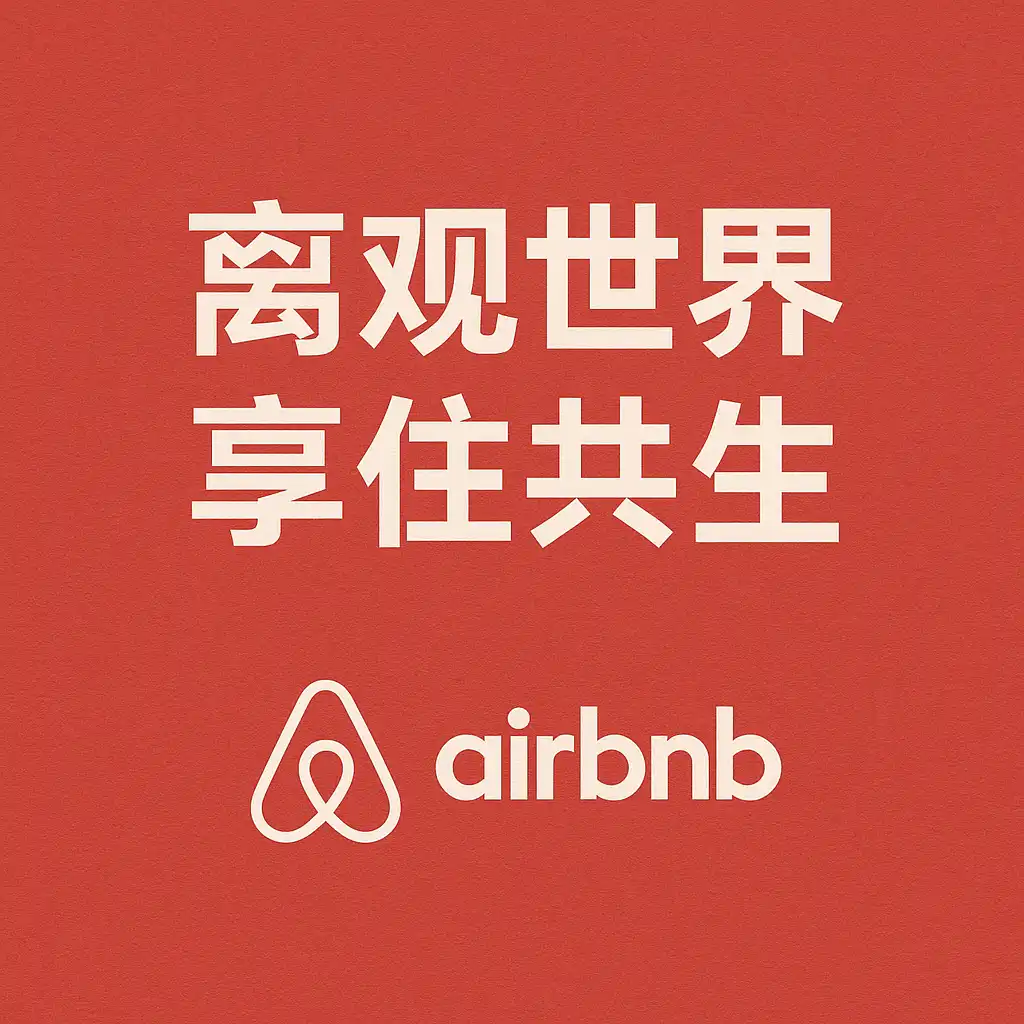English slogans rarely work in Chinese. Learn why—and how to localize taglines with impact using cultural insights, poetic rhythm, and A/B-tested messaging.
This article is a practical guide for business owners, marketers, and creatives who want to craft taglines that resonate in both English and Chinese markets. It explains why English taglines fail in Chinese when translated directly, and what you can do to make sure your message works just as powerfully in Chinese. You’ll learn real-life examples, translation pitfalls, cultural insights, and actionable hacks—this is especially important because English taglines fail in Chinese when cultural and linguistic nuances are overlooked.
Why Your Cool Slogan Flops: When English Taglines Fail in Chinese
A tagline like “Think Different” (Apple) or “Just Do It” (Nike) might feel clever, sleek, and minimalist in English. But directly translating it into Chinese often results in confusion, blandness, or unintentional comedy.

For example:
- “Think Different” translated word-for-word becomes “思考不同” (“think not the same”), which lacks rhythm or emotional punch.
- “Just Do It” becomes “就进行” or “就做吧”, which can sound either mechanical or childlike depending on tone.
Let’s explore why this happens—and how to fix it.
Reason #1: Language Structure Is Totally Different
English relies on short, punchy phrasing. Chinese thrives on balance, rhythm, and parallelism.
Example:
- English: “Power Your Dreams” (XBOX)
- Awkward Chinese translation: “给你的梦想装上高功率” (“Give your dreams high performance”)
In Chinese, clarity often trumps abstraction. If a phrase doesn’t immediately make sense, it’s forgotten or ignored.
What to Do:
- Start with the meaning, not the words. What emotional reaction do you want to trigger?
- Use idioms or poetic language where appropriate—they’re memorable and persuasive.
Reason #2: Cultural Values Differ
Chinese culture places high value on harmony, family, community, and collective progress. Western slogans often emphasize individualism, challenge, or rebellion.
Example:
- English: “Have it your way” (Burger King)
- Chinese audience might read this as overly self-centered.
Stat: In a Nielsen Asia-Pacific study, 71% of Chinese respondents preferred messaging that emphasizes security, family, or group benefit. Another reason why English taglines fail in Chinese is their reliance on individualism, which often clashes with collective cultural values.
What to Do:
- Localize the message, not just the words.
- Avoid idioms or metaphors that don’t cross cultures (e.g., “hit the ground running”).
Reason #3: Humor and Wordplay Often Fail in Translation
Puns, rhymes, alliteration—they’re great in one language and useless in another.
Example:
- English: “Finger-lickin’ good” (KFC)
- Early Chinese version was “吃了你的手指” (“Eat your fingers off”)—no joke.
Even today, many taglines lose their flair once translated.
What to Do:
- Recreate the spirit, not the form. If it’s meant to be funny or playful, find a new way to achieve that in Chinese.
- Test it with real users. A quick poll on WeChat or Xiaohongshu can save you a lot of trouble.
Reason #4: Tone and Formality Aren’t One-Size-Fits-All
Some phrases that sound bold in English may sound arrogant in Chinese.
Example:
- English: “We Lead. Others Follow.”
- In Chinese, it could feel brash or impolite (“我们带头,别人仿效”)
Chinese prefers modesty and implication over declaration.
What to Do:
- Choose tone-appropriate expressions. Use suggestion, not declaration.
- Consult native speakers with marketing experience.
Tips and Hacks to Craft a Winning Tagline for Chinese Market
✅ Tip 1: Before you even write the English tagline, ask: how would this idea naturally express itself in Chinese? This mindset shift helps avoid the common trap where English taglines fail in Chinese due to rigid, word-for-word thinking.
✅ Tip 2: Use Parallelism Chinese slogans are often built on parallel structure: 4 or 6 characters, rhythm, and repetition.
- Example: 简单体面,创新非凡 (“Simple interface, extraordinary innovation”)
✅ Tip 3: Borrow from Proverbs Chinese chengyu (成语) carry strong emotional and intellectual weight.
- Example: 稳托如山 (“Steady as a mountain”)
✅ Tip 4: Highlight Social or Family Benefit
- Instead of: “Upgrade your life”
- Try: 更好的自我,更美的家庭 (“Better you, better family”)
✅ Tip 5: Run A/B Testing on Chinese Platforms Use polls or feedback tools like:
Use polls or feedback tools like WeChat Groups, Xiaohongshu, or WeChat Mini Programs to test your tagline with real users before launching.
Examples of Success
These are perfect examples of how English taglines fail in Chinese when translated literally.
✅ Apple in China
- Original: “Think Different”
- Chinese: “异想大作”
- Uses rhyme and dramatic flair to feel both elite and poetic.
✅ Coca-Cola
- Chinese brand name: 可可乐 (Kē Kē Lè)
- Means “tasty and joyful”—a branding legend in its own right.
This success story counters the trend we often see—how English taglines fail in Chinese due to tone-deaf translation.
✅ Airbnb

Airbnb
Speaks to community, harmony, and sharing—core Chinese values
“Belong Anywhere” became: 旁观世界,享住共生
Mistakes That Prove English Taglines Fail in Chinese
🚫 Translating Word-for-Word
- Bad: “Your idea, your future” => 你的想法,你的未来 (feels clunky)
- Better: 创意热情,照亮未来 (Creative passion lights the future)
🚫 Using Unverified Freelancers
- Many cheap translators just plug the phrase into Google Translate.
- You get what you pay for.
🚫 Skipping Local Consultation
- Run drafts by bilingual marketing experts or local clients.
You Don’t Have to Do This Alone
Crafting a Chinese tagline that works—especially when English taglines fail in Chinese—is about insight, empathy, and cultural fluency.
If you’re rebranding, expanding to China, or just want to fine-tune your image: take your time and do it right. Don’t guess. Don’t settle for machine translations.
Our team specializes in helping brands adapt messaging that feels native and natural—not just accurate. Whether you’re launching a product, updating your brand, or navigating a complex bilingual market, we can help ensure your message hits home.
Services Offered:
- Tagline and brand slogan localization
- Bilingual copywriting (English ↔ Chinese)
- Cultural consulting and A/B testing
- Visual branding and document design (optional)
Don’t risk your message getting lost in translation. Many English taglines fail in Chinese, but yours doesn’t have to. Contact us today to craft a Chinese tagline that connects with your audience and strengthens your brand!
7 Expert Tips for Choosing the Right Fonts for Chinese, Japanese & Korean Websites
Chinese Website Translation: A Complete Guide for Global Businesses
